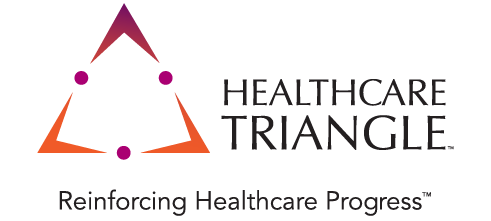2021 Revenue Cycle – What to Expect?
Healthcare Triangle
Jan 27, 2021
As 2021 is now underway, here’s what you can expect from healthcare-centric revenue cycle projects. Budgets and spending may continue to get trimmed throughout the year to offset the financial difficulties and lower margins COVID has brought, but IT and RCM technology projects will be mostly untouched, and may even get bumped-up in priority.
1. A greater emphasis on projects seeking to maximize technology already on-hand.
- Simply put, most organizations continue to feel that their existing technology simply isn’t doing enough. And the pandemic has bumped it back up to the top of the priority list. Last year, 84 percent of hospital finance leaders and 79 percent of leaders at large physician practices report they already have or are planning on performing audits on their technology & digital transformation capabilities. Furthermore, 93 percent of those who complete such reviews find missed technological opportunities, redundancies, or conflicts.
- These initiatives will continue to be focused both on improving the EHR and its related functions, as well as work seeking to progress integration & digital transformation goals (telehealth, remote monitoring, web-based engagement & analytics, etc).
- Features such as patient-centric input, intelligent scheduling logic (decision trees), and revenue audit and monitoring controls will be critical to have in place and optimized.
2. Virtual factors remain priority number one to offset revenue challenges
- The appetite and demand for virtual services, both clinical and billing-related, will remain essential to organizational strategy and financial success.
- Scaling telehealth intentionally and intelligently will continue to be a top priority to mitigate declining margins and procedure/visit volumes.
- This necessitates revenue cycle teams being flexible and attuned to addressing new RCM issues and obstacles on a regular basis. Those who continue only to be reactive to the adapting world and billing circumstances around them, will continue to lose revenue in the shuffle of continued change.
- The % of uninsured and underinsured patients will continue to be a problem to monitor and address until the status of COVID and unemployment rates see significant improvement
3. Initiatives focused on improving the patient experience.
- Creating positive patient experiences in all regards has already taken center stage as organizations compete to attract and gain patients. Driving digitally connected experiences, whether via caregiver, family, or independently, will increase the likelihood that patients turn to your organization for service.
- Price transparency – now that regulation is in place (although with minimal penalties), organizations will begin to give strategic thought to what and how they present their cost data for competitive advantages. There will also be a “figuring out” period, for how technologies ultimately can help to address price transparency long term.
- Communication – voice, text, email, video, all seamlessly integrated and available through standard channels and platforms will give patients a consistency they yearn for (and sometimes need in taking ownership of their health). The importance of high quality work & capabilities in Patient Access & Patient Financial Service departments will grow.
4. Automation wherever possible in order to reduce labor & workforce burdens, and gain organizational efficiency.
- Automating not only components like financial clearance and follow-up that are required for billing execution, but also the larger patient revenue cycle experience - Scheduling, Price Transparency, Education & Reminders, Billing & Collections
- Is it easy for patients to obtain service, understand and pay for their costs, and experience minimal obstacles or disruptions in the process? If so, they are going to keep coming back and your bottom line will improve. And whether that means video visits, remote messaging and communications, or interoperability of data (clinical and financial), the technology has to be there and supporting intelligently.
- Advanced financial analytic tools, dashboards, & report/data integration between various systems can no longer be avoided. Those who don’t have their Technology systems and RCM tools integrated are going to continue to struggle. Those who have precise financial data and indicators at their fingertips will be able to strategize and adjust quickly where needed.
- Manual billing and claim procedures. Cost reduction will continue to be a goal, technology & tools that augment the human workers, and even provide data about human vs computer productivity, efficiency, and efficacy, will be seen and used more and more.
81 percent of healthcare CFOs and senior leaders indicate there is an absolute and immediate need for technology to be implemented and optimized, in order to ensure the long-term survival of their organization.
With all of the above in mind for 2021, there’s no doubt we’ll “see” each other out there working in the Revenue Cycle space.
For further discussion or immediate healthcare project-related assistance, drop an email to info@healthcaretriangle.com or schedule a consultation.


